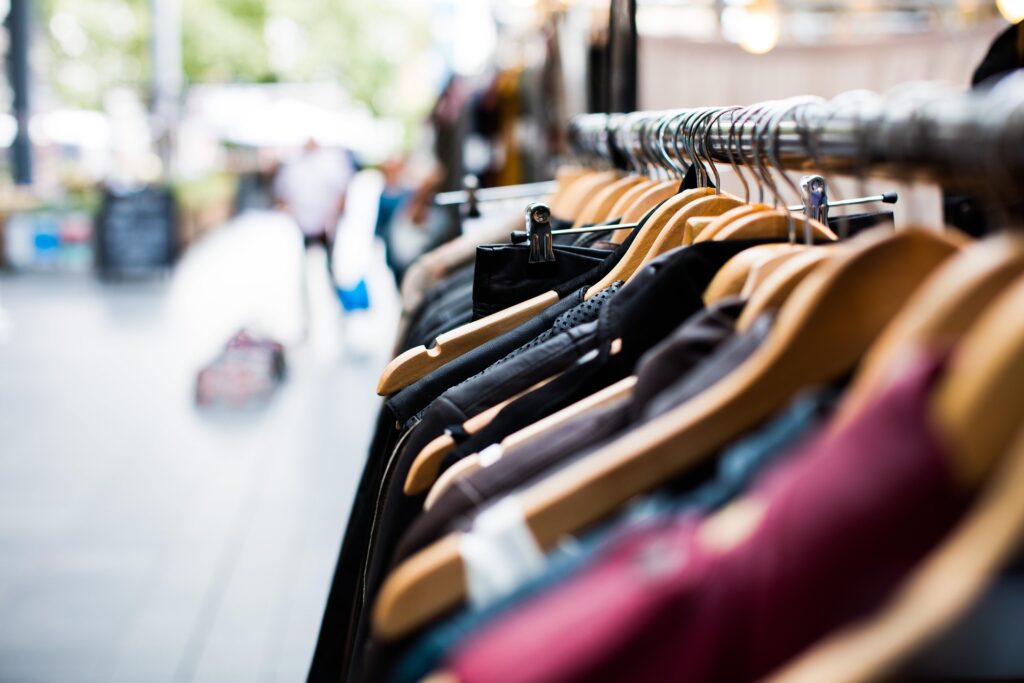Hi Ladies and Gentlemen. I’m going to be talking about something a little different today.
A couple weeks ago I received some coats that I had ordered from an online thrift store. I purchased them all for around the same price but noticed that the quality varied quite a lot between them. That got me thinking. “What do I look for when thrifting? What are some ways you can tell if an item is good quality or not?” After days of finding myself still thinking about it, I decided that I should make a blog post sharing the checklist I use when thrifting. So here it is.
Note: Cover photo from Pixabay
The Coats
These are the three coats I am going to use as examples to point out different aspects of quality in clothing. As I mentioned earlier, I got all the coats for the same price but the quality varies between them.
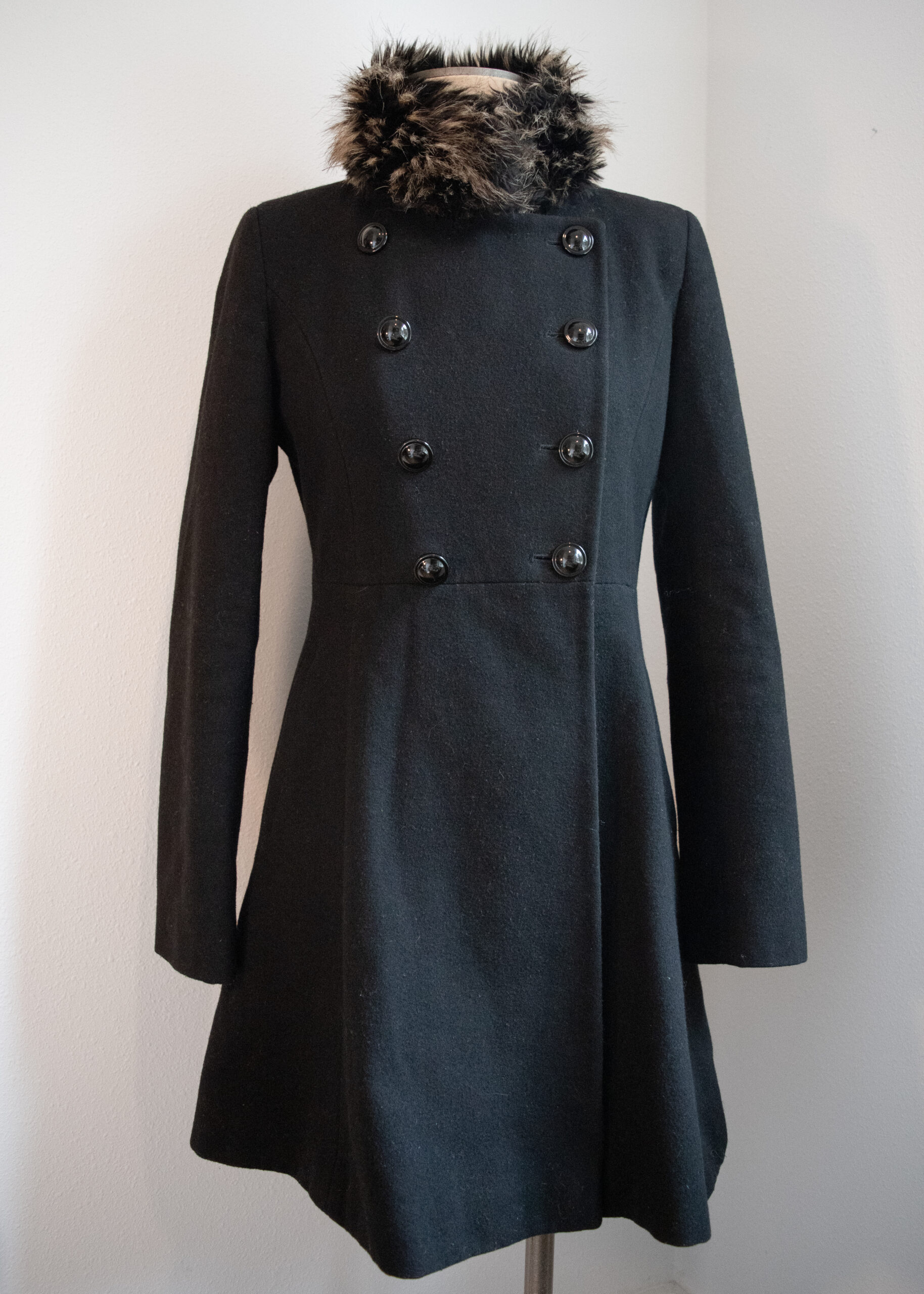


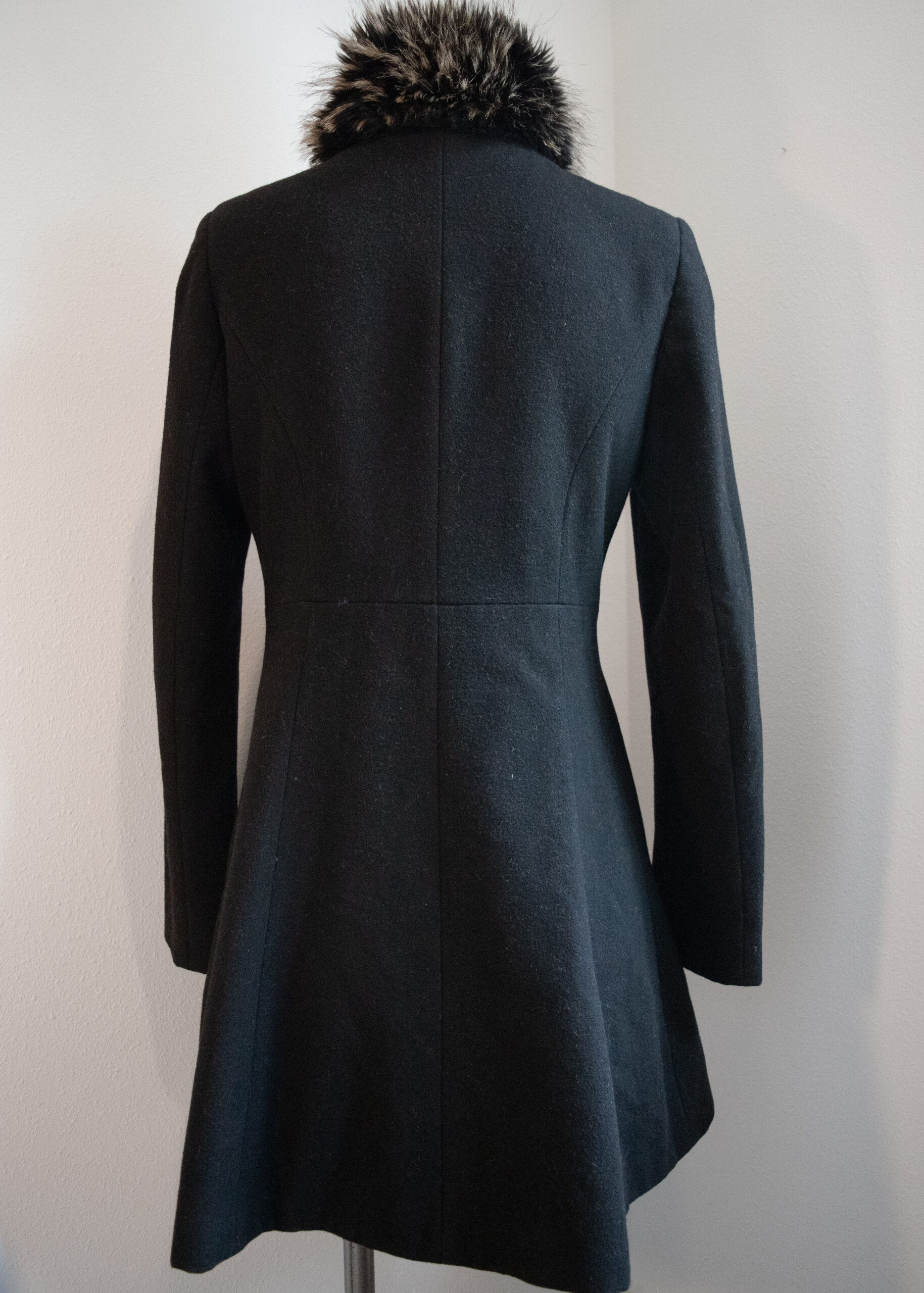
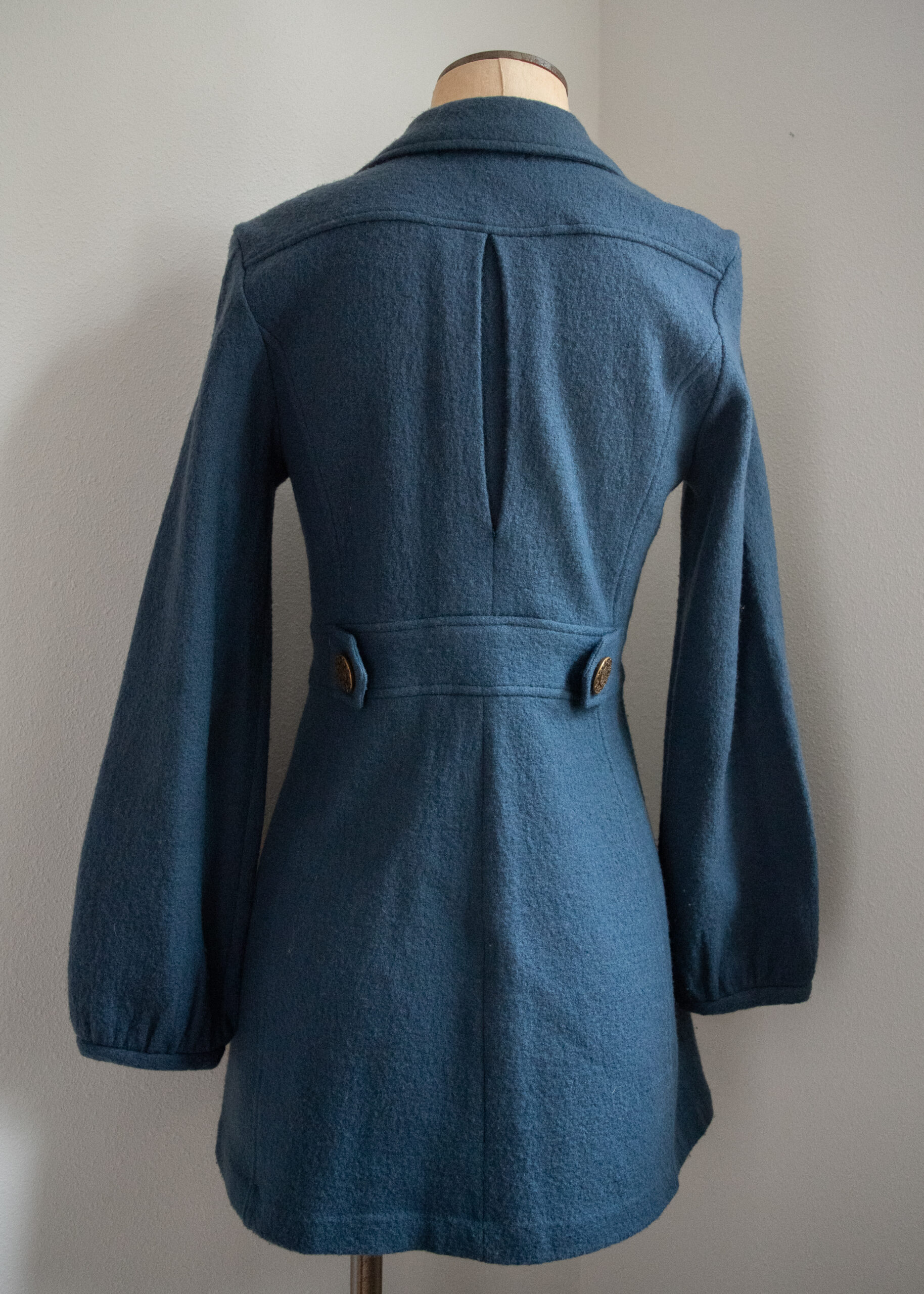
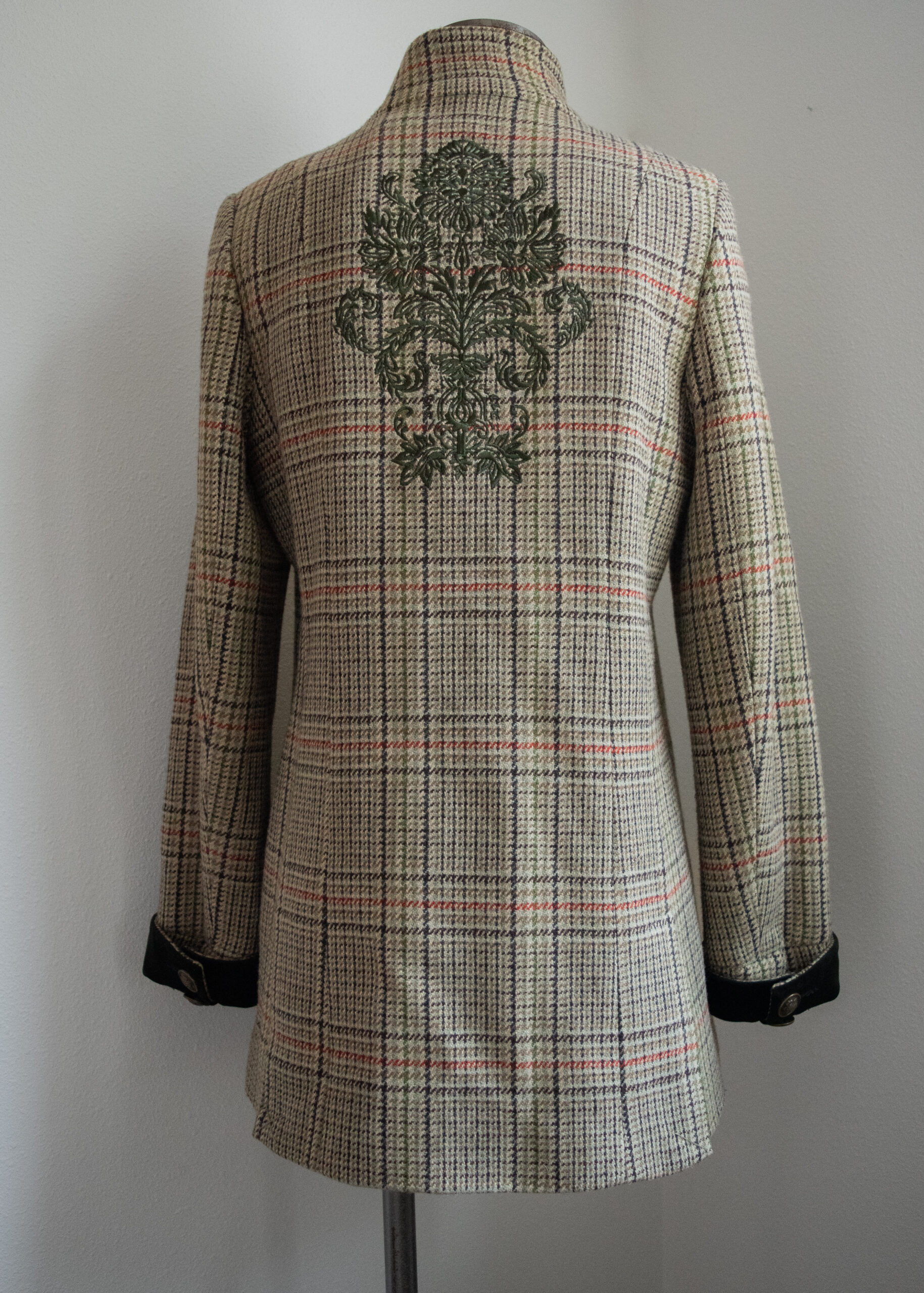
Step one: Feel the material
Now this one is a no-brainer, but it’s the first thing I do when I see a piece of clothing that I’m drawn to. If the material feels rough or itchy at all, I know that even if it looks cute on me I’m never going to wear it. Why waste the money on it if that’s the case?
There is one exception to this rule. If the item is a coat or garment that is only going to be worn as an outer layer, I might still get it.
The Example Coats:
The three coats all have different textures. The black coat feels like a normal coat, not rough or scratchy. The blue coat is slightly itchy. The plaid coat is scratchy on the outside but is lined, so it doesn’t feel uncomfortable when worn.
Step Two: Look at the Brand
If the garment I’m drawn to feels soft and comfortable to the touch then I’ll look and see what brand it is. There are some brands that are immediate no goes for me (Shien, Zara, and Walmart brands). The reason these are no goes is because they are cheaply made and won’t stand the test of time (and there is another reason as well that I will delve into in step three). Other brands (like Target brands and Fred Meyer brands, and H&M) I will buy only if they are on sale that day (the thrift store I shop at has days where certain color tags are only $1.99). Now, these garments are also not well made and won’t last very long, (I still remember the time I tried on a shirt in Target and the hem ripped while I was putting it on). “So why still buy them?” you ask. Great question. I only buy them if I need of a simple shirt for work, or am making a costume.
Then, there are the brands that are higher quality (Nordstrom Rack, Macy, Talbots, and some online brands). These brands I know are going to last longer than the brands mentioned above. (Note: even though Nordstrom Rack has higher quality brands there are still some garments that are not as good as others, that’s why some of the next steps are important to keep in mind when choosing a garment)
If there’s a brand I don’t know, I’ll usually research it after I’ve tried on the garment. A quick google search tells me: where the brand is sold (Macy’s, their own store, etc), and how much the brand’s garments are (money doesn’t always mean quality, but it’s a good indicator of whether a garment is higher quality or not).
The Example Coats:
The black coat is from Via Spiga (which is found at both Nordstrom and Macy’s). The blue coat is from Cabi (which is an online store. Their jackets are around $150-$200 on their website) The plaid coat is from Soft Surroundings (Which is also an online brand. Their jackets are around $100-$150).
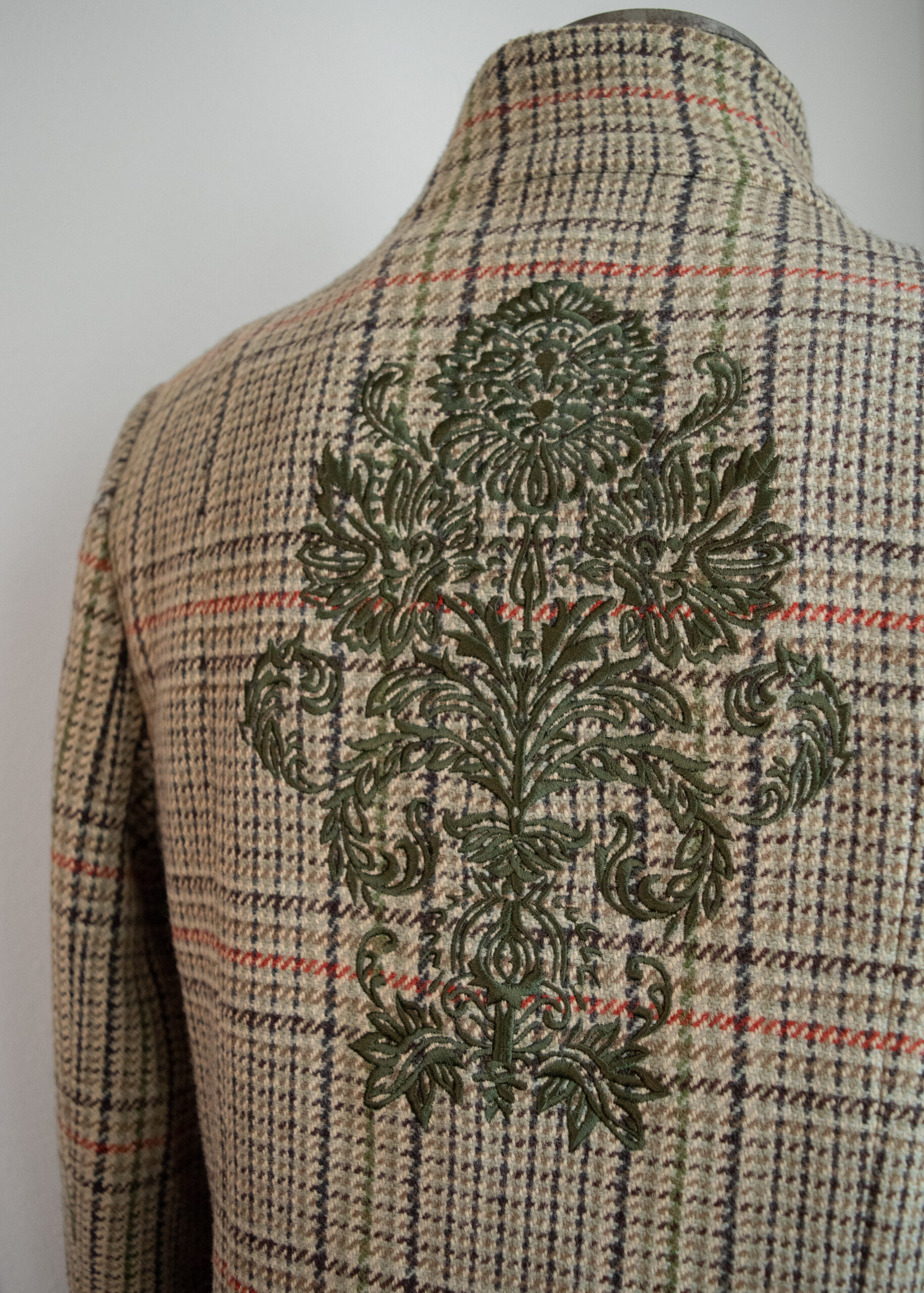
Step Three: Look at the Fabric Content
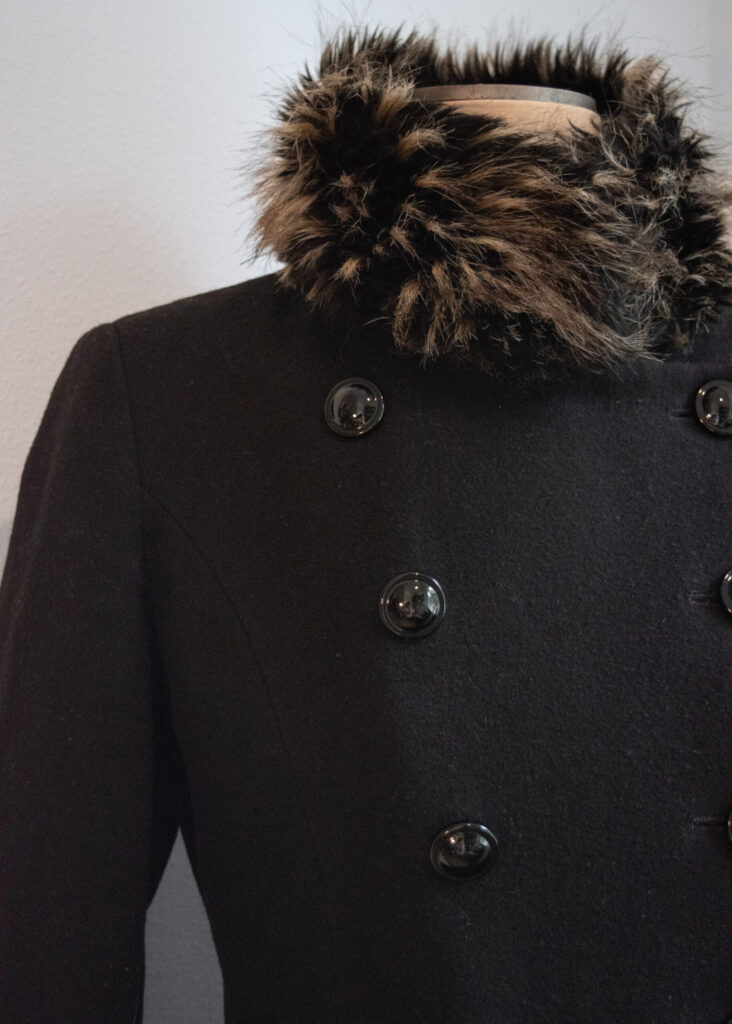
After I’ve looked at the brand, I look at the fiber content. What is the garment made of? Most garments today are made from fabric blends (rayon, modal, cotton, wool, silk, etc), this makes it hard because I prefer clothing made from natural fibers (cotton, linen, wool, and silk). Natural fibers are more breathable than synthetic ones and have been around for hundreds of years. Synthetic fabrics are made from oil (polyester) and/or plastic (also polyester) and/or plant based materials (rayon) that are so chemically altered that they can’t even be considered ‘natural’ anymore. If caught on fire, the synthetic materials will melt and turn into plastic. Which also means that once those garments are disposed of, they will sit in landfills for years.
It has become harder and harder to find garments made from 100% natural materials (especially ones that are still affordable), so I still buy and wear garments that are partially polyester or rayon. That being said, I try to only buy these garments second hand. If I’m going to buy new clothes, I would prefer that they are made from natural materials.
The Example Coats:
The black coat is 60% Wool, 30% Polyester and 10% Viscose. Its lining is 100% Polyester. The Blue coat is 100% Wool and the lining is 100% Cotton. The Plaid coat is 50% Wool and 50% Viscose. Its lining is 100% Polyester.
(Note: not only should you be aware of fiber content, but also fabric dyes. For example, Shein is rumored to use lead — which is extremely poisonous— in their dyes. Not only does this mean that you are wearing lead, but also that the people making the garment — who are in sweatshops and not treated like the valuable human beings they are— are breathing in those chemicals. I find this disgusting.)
Step Four: Try it on
Once I’ve found a garment I like, is from a good brand, and isn’t entirely polyester, I’ll put it in my basket to try on. Trying on the clothes is important because a garment can look completely different on you vs on the hanger. Also, some garments may look like they are good quality, but when you put them on you’ll realize that they bunch up in strange places and have an unflattering silhouette.
Another thing to pay attention to is the color: does it complement your skin tone or wash out your face/ make you look sickly/ make you look like you have dark circles under your eyes?
Personally, even if I find a garment I love, if the color doesn’t go well with my skin tone I know it’s just going to sit in my closet for years.
The Example Coats:
The black coat fits very well, looks good with my skin tone, and has a nice silhouette. The fur collar on the coat is a little large so it might need to be worn with my hair up in a bun or braids. The blue coat looks nice both unbuttoned and closed and the color looks good with my skin tone. The plaid coat fits very well and is very comfortable, but it has a green tinge to it that doesn’t compliment my skin tone.
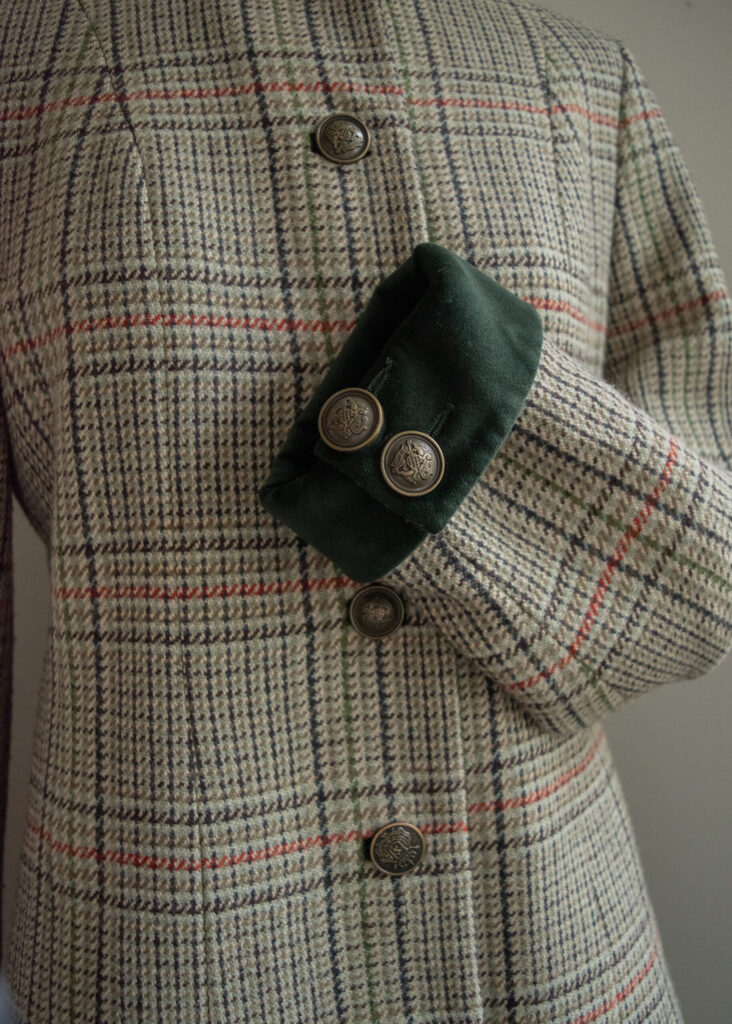
Step Five: Look at the Details
Now we’re getting into the little details. These aspects of quality won’t make or break my decision on a garment, but they are things to look out for if you are wondering if a garment is worth the price or not.
Is There a Flaw in the Design?
Look and see if there are any aspects of the garment that just feel off.
For example: if you look closely at the photo on the right (or below on a phone screen), you can see that the back pleat on the coat is not quite centered.

Is it Lined?
For coats and jackets, if they are fully lined that is a good sign of a higher quality garment. Fully lining a coat means that all the seams are fully sealed and it is less likely to succumb to the wear and tear of being worn.
For example: If you look at the picture on the right (or below on a phone) you can see that the plaid coat is fully lined.
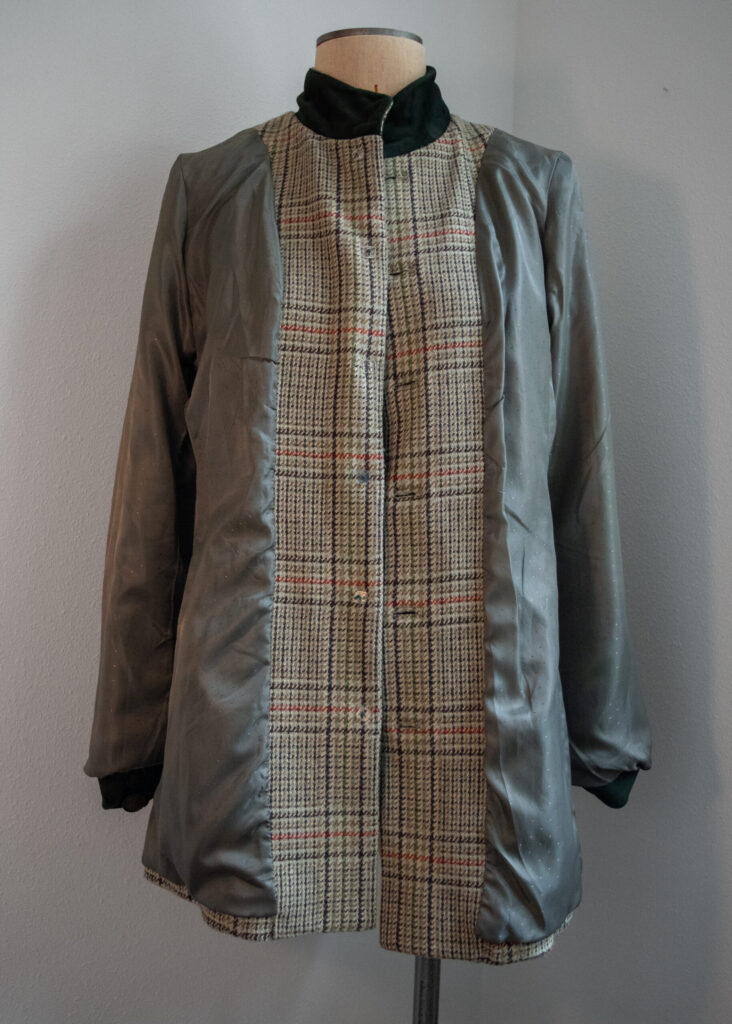
Is the Seam Sewn Well?
Look at the seam on the garment, if the individual stitches are very wide, that means that the garment isn’t very good quality. On the other hand, if the stitches are small and tight, that means the garment is usually higher quality (it is much quicker to sew wide stitches than tight ones).
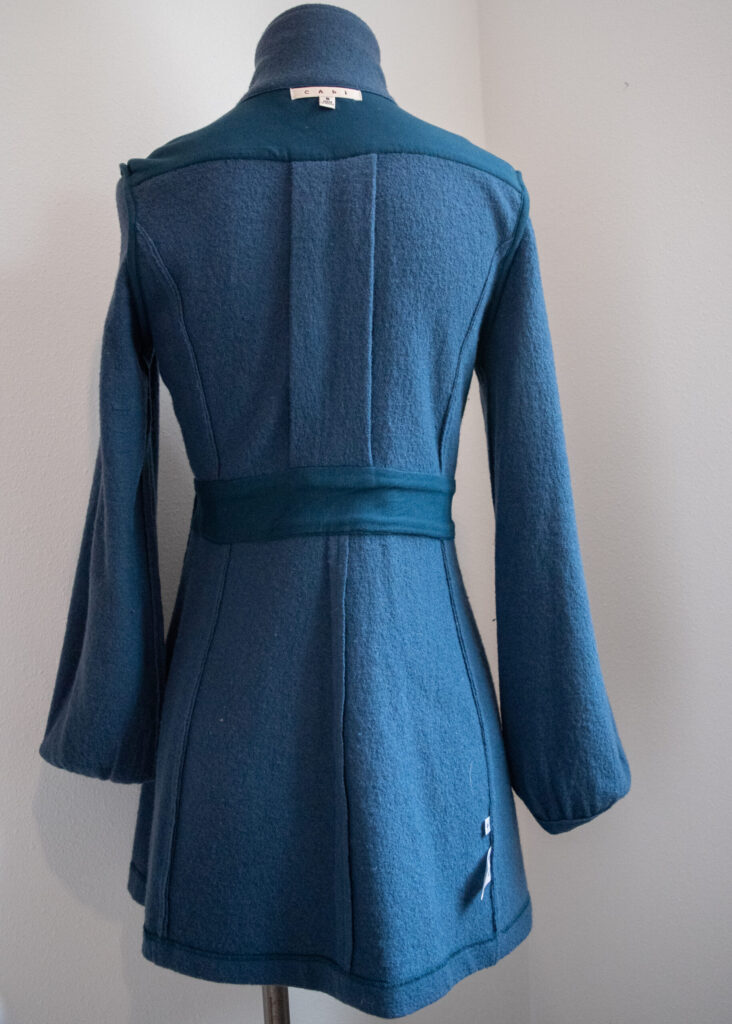
How is the Garment Hemmed?
If the hem is finished with a loosely serged edge (and you can see visible threads sticking out) then the garment isn’t going to last very long. If the hem has been folded twice (or has been french seamed) and the raw edge is fully sealed and hidden from view, then the garment will last longer.
(Note: some fabrics –like tulle– don’t need to be hemmed because they do not fray.)
(The blue coat has a loosely serged edge and isn’t lined: pictured left– or above on a phone– and below)
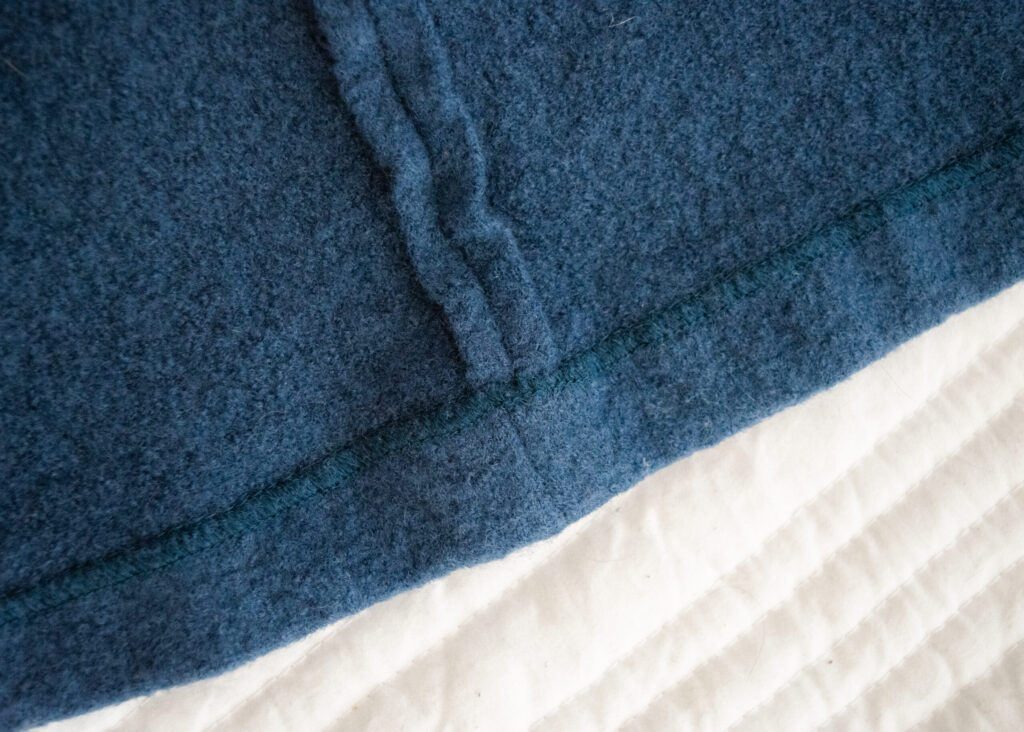
Are There Buttons? If so, How are They Sewn on?
If the buttons feel like they are about to fall off after wearing it once or twice, then you might want to re-enforce those buttons with some extra thread, or, if you don’t like to sew, you might want to skip out on that garment.
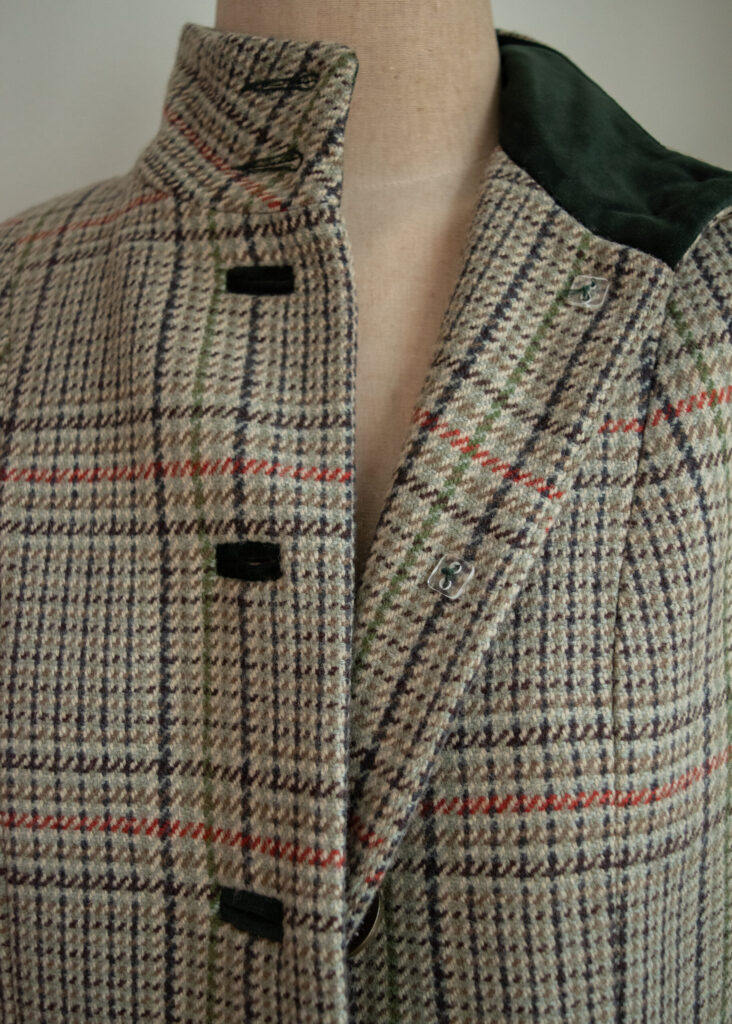
High quality clothes (specifically blazers, jackets, and coats) will put a second button (pictured on the right or above on a phone) on the inside of the garment. The outer button will then be sewn to the invisible button. When you pull on the outer button (to button your coat closed) you are actually pulling on the inner button and not the fabric. This means the garment will last longer because there is less wear and tear on the fabric.
Are the Buttonholes Fraying at all?
If the buttonholes are finished with a wide zigzag stitch and there are visible threads sticking out of the buttonhole, the garment is probably not the best quality. Higher quality garments will either finish the buttonholes with a tight stitches, or line the buttonhole with another fabric.
(The plaid coat has lined button holes: pictured left or above on a phone)
My Final Rating for the Coats: (and which ones I kept)
The coat that is the highest quality (in terms of construction) is the plaid one. Even though the materials used are not as natural as the blue coat, the little details in the design (like the clear buttons on the inside of the garment, the lining, and lined buttonholes) mean that it will last through many uses. That being said, I ended up returning the coat because of it’s color. The coat is a unique greenish-yelllow that washed me out. I knew that if I kept it, I wouldn’t want to wear it.
In second is the black coat. The material is thick and warm and it is fully lined. It also looks very flattering. I decided to keep this coat and am happy to add it to my closet.
In last, I would put the blue coat. This is because there are flaws in the construction, the material is pretty thin, and the coat is only partially lined. Even though the materials used are high quality (cotton and wool), the coat itself lands somewhere in the middle. It feels like the company wanted market the coat as a higher quality material, but still wanted to keep it low budget, so they went a cheaper route in terms of construction. All that being said, I decided to keep the blue coat because I loved the color and the style.
There you have it folks! Those are the things I keep in mind when thrifting. Do you agree or disagree with my steps/points. Is there something that I didn’t mention that you like to look out for when thrifting? Let me know in the comments below!

